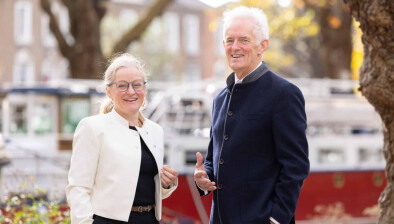Analysis: Climate action and planning – the Coolglass judgment

Alison Hardiman
Philip Lee lawyers Alison Hardiman, Alice Whittaker, Niall Donnelly, Rachel Minch and Leonora Mullett share their views on Coolglass v An Bord Pleanála.
Alison Hardiman on our planning and environment team spoke on the ‘Planning and Development Act, 2024 and Offshore Renewable Energy’ on 22 January 2025 at the CLG Environmental Law Conference.
The new Planning Act which this team wrote about in some detail previously, does not, of course, operate in a vacuum and as such the timing of this lecture allowed for a focus, among other things, on the implications of the Coolglass v ABP [2025] IEHC 1 judgment, which considers highly relevant aspects of statutory interpretation.
Delivered in the same week as the Nagle View Turbine Awareness Group (No. 2), Annagh Wind Farm Limited and Eco Advocacy CLG judgments, this was a remarkable start to the year within the Irish High Court planning list for those seeking to navigate the authorisation of renewable energy infrastructure.
All of these judgments show strong support for the climate objectives set out in government policies and binding international obligations. At the time of writing, it remains to be seen whether these decisions will be appealed.
Pending any such appeal, there is a wealth of material within the Coolglass judgment that merits close analysis. The ‘Statement from An Bord Pleanála on renewable energy decisions’ published on 15 January 2025 is also notable.
The Coolglass decision concerns an issue that has been of central relevance to our renewable energy clients in the last year, in particular the limitation within certain county development plans (CDPs) of regions within which renewable energy infrastructure projects have recently been designated as “not open for consideration” and the reluctance of planning authorities and An Bord Pleanála to grant permission for projects within those regions notwithstanding their legislative discretion to do so.
In some instances, the Office of the Planning Regulator (OPR) and the Minister for Housing, Local Government and Heritage have intervened in relation to the designation of such regions in CDPs, but typically only to a minimalistic extent.
Within the Coolglass decision, the outcome of the case itself was decided within the opening pages. The court then went on to decide the remaining core grounds which raised issues of broader and general importance.
The judgment thereby seeks to offer up its interpretation of how key legislative provisions and procedures should interact, and a methodology for public authorities and decision-makers to follow when carrying out their functions. The approach outlined in the decision has significant implications extending beyond the renewable energy sector, and beyond the sphere of planning law and planning decisions.
Meaning of section 15(1) of the Climate Action and Low Carbon Development Act 2015, as amended (2015 Act)
In its amended form, section 15(1) provides as follows:
“A relevant body shall, in so far as practicable, perform its functions in a manner consistent with…
- the most recent approved climate action plan,
- the most recent approved national long term climate action strategy,
- the most recent approved national adaptation framework and approved sectoral adaptation plans,
- the furtherance of the national climate objective, and
- the objective of mitigating greenhouse gas emissions and adapting to the effects of climate change in the State.”
As defined, a relevant body includes the Board, and a wide range of other public authorities.
When initially drafted in 2015, the provision had a similar list (a) – (d) but commenced: “A relevant body shall, in the performance of its functions, have regard to…”
The decision provides an analysis of the “distinction between have-regard-to obligations and comply-with obligations” which are noted as being “foundational to administrative law and to planning law in particular”. For the purposes of interpretation of s.15(1), the key component of the analysis is as follows:
(v): “Comply-with as far as practicable or possible– the decision-maker is required to comply with the matter in question, unless it is not possible or practicable to do so (concepts that are linguistically separate but only infrequently different in practice). Practicable means capable of being put into practice, not merely doing what is reasonable. This is a very high standard only just falling short of unconditional compliance requirements. It applies only unless compliance is not feasible…”
As regards the change from the 2015 wording “have regard to”, the court expands as follows at paragraph 70:
“… the change to s. 15(1) is clearly a step-change from a mere have-regard-to obligation to a comply-with obligation. That distinction is foundational and not to be minimised or nullified, and nor could it have been inadvertent.”
This culminates at paragraph 102 with a statement that: “… I agree with the applicant that the court must interpret the 2015 Act, insofar as possible, to ensure that Ireland’s EU law climate obligations will in fact be met…”
Notably, whereas other legislation can be found which obliges a public authority to “endeavour” to comply with a particular obligation in so far as is practicable, the court held that the obligation in section 15(1) is of a higher order.
Indeed, Mr Justice Holland delivered a decision on 15 January 2025 in Mount Salus Residents’ Owners Management Company Limited v An Bord Pleanála, the Minister for Housing, Local Government and Heritage, Ireland, the Attorney General, and the Office of the Planning Regulator, which also looks at the obligation to comply “in so far as is practicable” with a direction of the Minister in the context of the county development plan-making process.
At paragraph 485 of that decision, Holland J expressed the view that “practicable” in that context allows “significant margin of appreciation” to planning authorities so that, by their choices, they will not be placed in a catch-22, i.e. that they will in an effort to comply with competing policy pulling in different directions, find that by complying with one binding policy obligation, they have breached another irreconcilable policy requirement.
For prospective developers seeking to obtain authorisation for renewable energy infrastructure, the Coolglass judgment represents a remarkable shift-change towards a strong presumption in favour of permission for climate mitigating and decarbonisation projects. The corollary is also true; projects which will contribute significant emissions face a standard of proof in relation to section 15 which is arguably higher in light of this decision.
Performing decision-making functions in a manner consistent with section 15 of the 2015 Act
At paragraph 131 of the decision, the court sets out a methodology for ensuring conformity with section 15, which is lengthy and instructive. We paraphrase it here for ease of reference. Where a decision-maker is called on to make a decision that is relevant to the achievement of any of the matters (a) to (e) in section 15(1), it should:
- Ask itself how best to decide the matter in a manner that would contribute to achieving the section 15 goals. In the case of renewable energy projects, the answer will “almost always be a grant of permission”. The fact that the individual project alone will not achieve a climate target is not a reason for refusal – as such reasoning would “strangle the effort to address climate change at the starting line.”
- Ask itself whether deciding the matter in a manner that furthers climate goals is precluded by a “mandatory and non-fixable” legal requirement, that removes any discretion or the exercise of judgment from the decision-maker. If so, the project must be refused, no matter how climate-friendly it may be.
- If there is no such immutable preclusion, however, the decision-maker must then ask itself if it can exercise its discretion or judgment in a manner as would favour the section 15 climate goals. For example:
- when deciding whether a project is consistent with proper planning and sustainable development, the decision-maker can exercise its overall judgment as to what constitutes “sustainable” development by reference to whether the development would further climate goals;
- when deciding on a project that would materially contravene a development plan, the decision-maker should permit the material contravention in whatever way that furthers climate goals, if practicable to do so;
- when deciding on a plan or project that is likely to have an adverse effect on a European site, protected under the Habitats or Birds Directives, the decision-maker “must apply the public interest override” (the principle of imperative reasons of overriding public interest — IROPI — under the derogation provisions in Article 6(3) or Article 16 of the Habitats Directive, or Article 9 of the Birds Directive) if practicable to do so;
- if there is an impracticability in granting permission for such plan or project, but such issue could be resolved by a procedural decision that is not impracticable, then the decision-maker should make the procedural decision that is most consistent with the section 15 climate goals, to enable the problem to be fixed — such as for example to request further or better information rather than refusing permission, and to enhance pre-application consultation and engagement to ensure that a project has greater potential to attain a grant of permission.
Of course, there must come a point in a process at which the decision-maker is entitled to make a decision to refuse, but the decision of the court does not engage in a detailed analysis of how this might work in practice in the day-to-day decision-making functions of a planning authority or the Board.
In the ‘Statement from An Bord Pleanála on renewable energy decisions’ published on 15 January 2025, the Board noted its independence and set out its recent record in relation to decisions on renewable energy projects. This demonstrates that there is typically more than one reason for refusal where a refusal occurs. It further demonstrates that the rate of refusal has been highest where the decision arose on an appeal from a refusal of the planning authority.
In other words, the Board is less likely to overturn a decision of the planning authority to refuse permission, than the Board is to refuse permission where the application is made to it in the first instance. This Statement, issued in the wake of the Coolglass judgment, illustrates the complexity of assessing these applications in a manner that will be deemed to be legally compliant.
The Board has been understandably less likely to overturn a decision of a planning authority to refuse permission on land use zoning grounds, where the site was “not open for consideration” for renewable energy, where the relevant CDP was recently made and neither the OPR nor the Minister had used their express statutory powers to intervene in a manner that would further the section 15 climate goals at the level of plan-making.
This follows many decades of decisions from the Irish Courts that have emphasised the paramount importance of the CDP in the exercise of planning functions by local authorities and the Board, constituting a form of “environmental contract” with the residents of each local authority area.
In that context, it is particularly relevant that, as noted in paragraph 130 of the decision, “projects must still comply with proper planning and sustainable development”.
Planning authorities retain the discretion to consider a project on its merits and to require that it accords with the core principles of proper planning and sustainable development. As noted in 131(iii)(a), the concept of proper planning and sustainable development must be “properly considered together” with the furtherance of climate objectives, and the decision strongly suggests (see for instance at paragraph 43) that the more traditional concepts of proper planning, such as visual impact and loss of amenity, may be outweighed by the overwhelming and overriding realities of the current climate emergency, particularly as climate change “itself threatens landscapes here and globally with vastly more sever disturbance, desertification, sea level rise, and so on”.
It therefore seems that, even within the concept of proper planning and sustainable development considerations, decision-makers must carefully evaluate any refusal of a renewable energy infrastructure project on the basis of a wider range of considerations of which climate goals are a very significant and weighty (and overriding, where practicable) factor.
Broader implications of the Coolglass decision on section 15 of the 2015 Act
Section 15 applies to all bodies that are prescribed for the purposes of the Freedom of Information Acts as a public body or public authority, and therefore the 2015 Act imposes a broad range of sweeping obligations across the whole of the public sector.
Instead of treating this fact as a reason to give section 15 a narrow interpretation, the court determined that its interpretation of section 15 “underlines and reflects the need for “rapid, far-reaching and unprecedented changes to all aspects of society and the economy” (paragraph 49).
This includes, arguably, the plans and objectives as set out in the new Programme for Government, which too must further the section 15 climate goals in so far as practicable.
And whereas the court in paragraph 132 emphasised that the strong presumption in favour of granting permission for renewable energy infrastructure “does not automatically translate into an obligation to refuse permission for developments that cause emissions”, there is a strong hint within the decision that this is an argument left open for another case on another day. The decision acknowledges two important points in this respect:
(i) “The concept of net zero implies a continuing necessity for some emissions in the short term at least. That relates to the fact that pending complete adaptation of the economy, there will be other imperatives of economic necessity that require projects that, in and of themselves, wouldn’t support climate goals in isolation. Energy security to enable the ongoing orderly functioning of society, especially in the context of the Russian Federation’s full-scale criminal war of aggression against Ukraine, is one example.”
(ii) “Even if a project is not in itself driven by such an imperative, one has to be conscious of displacement effects. Refusal of a project in Europe may simply have the effect of the project being relocated to a jurisdiction with lower environmental standards, thus producing more emissions overall. Emissions are definitionally a cumulative global problem, so while refusing such projects feels good in the moment, it may or may not be doing anything to combat climate change. Rightly or wrongly, that was an explicit part of my thinking in An Taisce v. An Bord Pleanála [2021] IEHC 254, [2021] 7 JIC 0205 (Unreported, High Court, 2nd July 2021). Such an approach doesn’t particularly give one a feeling of virtue, but it makes a certain amount of sense depending on the context.”
It has always been the case, but is now much more apparent, that in the preparation of an application for consent for any plan or project with climate implications, detailed consideration should be given in the application to how the proposed plan or project is consistent with and will further the section 15 climate goals, so that the relevant decision-maker has sufficient evidence on which to ground the decision and comply with section 15 in the performance of their functions.
Where the proposed plan or project would potentially deviate from those same climate goals, the evidential bar is arguably higher in light of this decision, to demonstrate why notwithstanding such deviation the proposed plan or project should nonetheless be granted permission, for example based on strong public policy or other such objectives in the public or national interest.
Quite how a decision-maker is to square away these potentially conflicting objectives and obligations is likely to be decided in another decision of the court, on another day.
![]()
- Alison Hardiman is a consultant and Alice Whittaker, Niall Donnelly, Rachel Minch and Leonora Mullett are partners at Philip Lee LLP.








